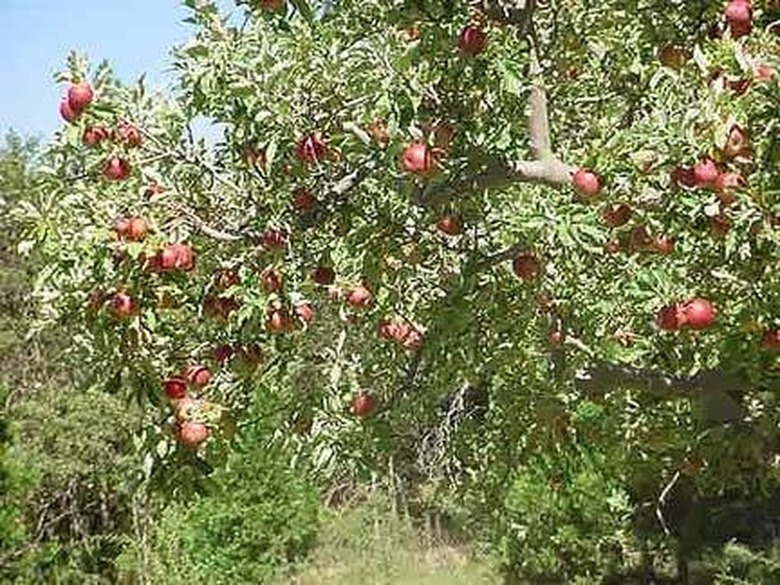The Best Time To Plant Apple Trees
Depending on the variety–and there is a wide variety–a young apple tree will bear fruit about three years after it's planted. Selecting the right location and planting your apple trees at the right time of year play a huge role in determining when juicy, crisp fruit develops on your tree.
Cold Climates
In cold climates, like the central and northern regions of the United States–where the ground freezes during the winter–plant your apples trees in the early spring. If the ground has thawed and warmed enough that you can easily dig into it deep enough for the root ball of the tree to have room to expand, then it's time to plant. Cool days that follow the planting will help your apple tree establish its root season and begin to grow during the summer.
Mild, Warm Climates
Plant apple trees in the late fall in warmer regions that do not experience heavy freezing over the winter. This is actually the very best time to plant an apple tree, as it allows the tree roots to fully establish themselves, giving your apple tree a head start for the spring. If you live in a warmer winter area without consistent moisture, check and water your newly-planted apple tree throughout the winter months.
- Depending on the variety–and there is a wide variety–a young apple tree will bear fruit about three years after it's planted.
- If you live in a warmer winter area without consistent moisture, check and water your newly-planted apple tree throughout the winter months.
Considerations
When planting an apple tree, the location is as important as the time of year you plant. Select a sunny spot that will give the tree at least six hours of sunlight. Although apple trees tolerate a variety of soil types, the soil should be fertile and well draining. Apples do better when they have good air circulating through them, with plenty or room. Most apple tree varieties are not self pollinating and need to have a companion apple tree nearby, though not necessarily of the same variety.
Apple Trees
Plan to prune your mature apple trees in the late dormant season, generally February to April. Cut off all branches that cross or rub together. Spurs grow only about 1/2 inch per year, and their production lessens after one decade. Direct the growth of each young apple tree by bending its branches horizontally for several weeks. Continue to do this task throughout the year to prevent pest problems. Faster-growing apple trees probably don't need nitrogen; so when their new growth appears in early spring, supply each of them with 1 pound of sulfate of potash per every 5 bushels of apples you harvested the past year. Apply most fertilizers by sprinkling them evenly on the ground at the base of the tree trunks, and then water that ground well. The application method may differ among fertilizer brands. Spray the apple trees with an application of dormant oil before buds appear in spring. The wire cylinders protect against vole and mouse damage. Embed the bottom of each cylinder about 1 inch into the soil. Leave about 4 inches between fruits.
- When planting an apple tree, the location is as important as the time of year you plant.
- Apply most fertilizers by sprinkling them evenly on the ground at the base of the tree trunks, and then water that ground well.
References
- Apple Tree Planting Guide
- Apple Essentials
- University of New Hampshire Cooperative Extension: Care of Mature Backyard Apple Trees
- National Gardening Association: Food Gardening Guide — Apple Tree Care
- University of Nebraska-Lincoln Extension: Early Spring Care for Fruit Trees
- The Old Farmer's Almanac: Apples — How to Grow Apple Trees
